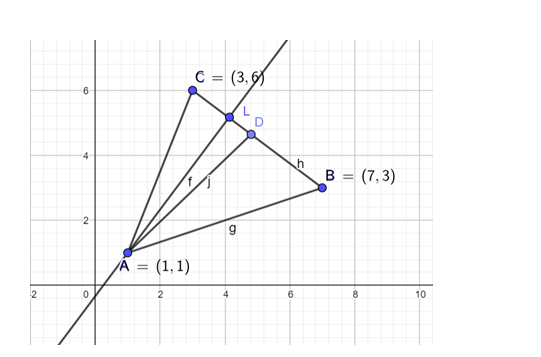A(1, 1), B(7, 3) and C(3, 6) are the vertices of a ΔABC. If D is the midpoint of BC and AL ⊥ BC, find the slopes of
(i) AD and
(ii) AL.

Given points are
A(1, 1), B(7, 3) and C(3, 6)
slope $=\left(\frac{y_{2}-y_{1}}{x_{2}-x_{1}}\right)$
Slope of line $B C=\left(\frac{3-6}{7-3}\right)=\frac{-3}{4}$
(i) As $D$ is the midpoint of $B C$, coordinate of $D$ are $D\left(\frac{x_{1}+x_{2}}{2}, \frac{y_{1}+y_{2}}{2}\right)$
$=\left(\frac{7+3}{2}, \frac{3+6}{2}\right)=\left(5, \frac{9}{2}\right)$
Now the slope of $A D=\left(\frac{9}{2-1}\right)=\left(\frac{7}{2}\right)=\frac{3.5}{4}$
(ii) As $\mathrm{AL}$ is perpendicular to $\mathrm{BC}$
The slope of $A L \times$ slope of $B C=-1$
Let slope of $\mathrm{AL}$ be $\mathrm{m}_{1}$
$\frac{-3}{4} \times m_{1}=-1$
$\Rightarrow \mathrm{m}_{1}=\frac{4}{3}$
So Slope of line $A L$ is $\frac{4}{3}$.
Click here to get exam-ready with eSaral
For making your preparation journey smoother of JEE, NEET and Class 8 to 10, grab our app now.
